
- Alan Cox (born July 22, 1968 in Solihull, England) is a British computer programmer heavily involved in the development of the Linux kernel since its early days 1991.
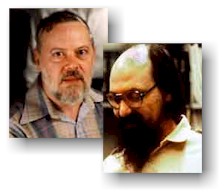
- Handles: dmr and Ken
a.k.a.: Dennis Ritchie and Ken Thompson
Claim to fame:
The driving creative force behind Bell Labs' legendary computer science operating group, Ritchie and Thompson created UNIX in 1969. An elegant, open operating system for minicomputers, UNIX helped users with general computing, word processing and networking, and soon became a standard language.
Unusual tools:
Plan 9, the next-generation operating system created as the natural descendant of UNIX by Thompson and Bell Labs colleague Rob Pike.
Little-known fact:
Although Ritchie is the author of the popular C programming language, his favorite language is Alef. Thompson, an amateur pilot, once traveled to Moscow to fly a MiG-29.
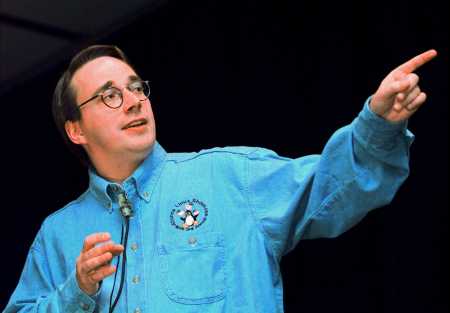
- Linus Torvalds
A true hacker in the classic sense, Linus Torvalds was a computer science student at the University of Helsinki when he wrote the operating system Linux (a contraction of "Linus' Minix") in 1991. The software has proven to be tremendously popular worldwide -- and best of all it's FREE!
Torvalds modestly attributes much of Linux's success to the Net and to Richard Stallman's GNU: Both have facilitated development of his original kernel by fostering collaboration among software programmers and developers.
He's humble, he's brilliant, he gave us all access to Unix -- no wonder Linus Torvalds received more votes than any other nominee.

- Linus
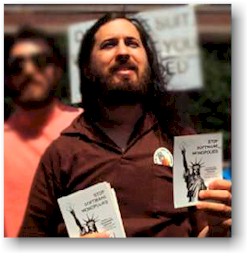
- Handle: None (nothing to hide!)
a.k.a.: Richard Stallman
Claim to fame:
A hacker of the old school, Stallman walked in off the street and got a job at MIT's Artificial Intelligence Lab in 1971. He was an undergraduate at Harvard at the time. Disturbed that software was viewed as private property, Stallman later founded the Free Software Foundation.
First encountered a computer:
In 1969, at the IBM New York Scientific Center. He was 16 years old.
Unusual tools:
In the 1980s Stallman left MIT's payroll but continued to work from an office at MIT. Here he created a new operating system called GNU -- short for GNU's Not Unix.
Little-known fact:
Recipient of a $240,000 MacArthur Foundation genius grant.
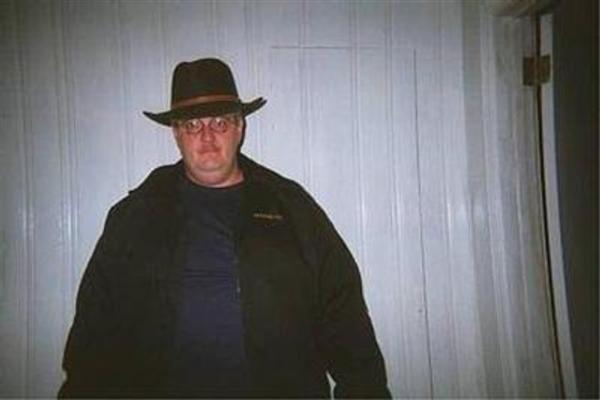
- Mitchell Epling
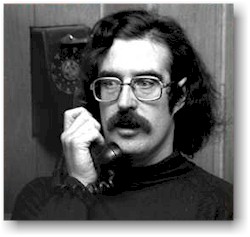
- Handle: Cap'n Crunch
a.k.a.: John Draper
Claim to fame:
Figured out how to make free phone calls using a plastic prize whistle he found in a cereal box. Cap'n Crunch introduced generations of hackers to the glorious concept of phone "phreaking."
First encountered a computer:
As a teenager, trying to convince pay phones to return his coin and put through his calls.
Unusual tools:
The toy whistle from boxes of Cap'n Crunch cereal. The whistle reproduced the 2600 hertz tone necessary to authorize a call. Used in conjunction with a bluebox, it allowed users to make free phone calls. (Oscar Meyer weiner whistles also briefly gained a following among phone phreakers.)
Little-known fact:
Honorably discharged from the U.S. Air Force in 1968 after a stint in Vietnam.
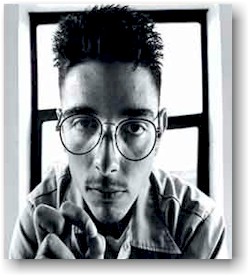
- Handle: Phiber Optik
a.k.a.: Mark Abene
Claim to Fame:
As a founding member of the Masters of Deception, Phiber Optik inspired thousands of teenagers around the country to "study" the internal workings of our nation's phone system. A federal judge attempted to "send a message" to other hackers by sentencing Phiber to a year in federal prison, but the message got garbled: Hundreds of well-wishers attended a welcome-home party in Abene's honor at an elite Manhattan Club. Soon after, New York magazine dubbed him one of the city's 100 smartest people.
First encountered a computer:
Hanging out in the electronics department of the A&S department store in Queens, N.Y., where his mother worked. There he was introduced to the Apple II, the Timex Sinclair and the Commodore 64. The first computer he owned was a Radio Shack TRS-80 (Trash-80).
Unusual tools:
Experimented by dialing patterns on a phone receiver. Abene used the receiver so frequently that it had to be bandaged with black electrical tape to keep its guts from falling out.
Little-known fact:
Phiber Optik's favorite food: mashed potatoes from Kentucky Fried Chicken. Not real mashed potatoes. Real ones have lumps in them.
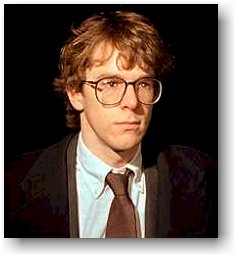
- Handle: rtm
a.k.a.: Robert Morris
Claim to fame:
The son of the chief scientist at the National Computer Security Center -- part of the National Security Agency (NSA) -- this Cornell University graduate student introduced the word "hacker" into the vernacular when he accidentally unleashed an Internet worm in 1988. Thousands of computers were infected and subsequently crashed.
First encountered a computer:
At home. Morris' father once brought home one of the original Enigma cryptographic machines from the NSA. It became a household conversation piece.
Unusual tools:
As a teenager Morris had an account on the Bell Labs' computer network, where early hacking forays gave him super-user status.
Little-known fact:
When the Secret Service raided the home of Legion of Doom member Erik Bloodaxe in 1990, they found a copy of the source code for Morris' Internet worm.
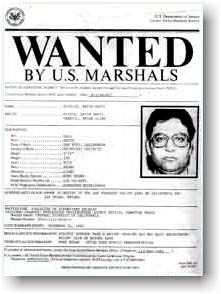
- Handle: Condor
a.k.a.: Kevin Mitnick
Claim to fame:
The first hacker to have his face immortalized on an FBI "Most Wanted" poster. His status as a repeat offender -- a teenage hacker who couldn't grow up -- earned Mitnick the nickname The Lost Boy of Cyberspace.
First encountered a computer:
As a teenager. Mitnick couldn't afford a computer, so he hung out in a Radio Shack store. He used the store's demo models and modem to dial other computers.
Unusual tools:
During the three years he was on the lam, Mitnick used Internet Relay Chat (IRC) as a message drop and to communicate with his friends.
Little-known fact:
Sentenced to a year in a residential treatment center, Mitnick enrolled in a 12-step program to rid himself of what a judge agreed was his "computer addiction." Hey, it's California.
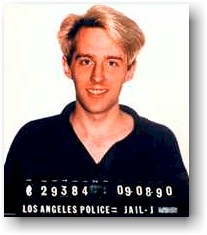
- Handle: Dark Dante
a.k.a.: Kevin Poulsen
Claim to fame:
In 1990 Poulsen took over all telephone lines going into Los Angeles area radio station KIIS-FM, assuring that he would be the 102nd caller. Poulsen won a Porsche 944 S2 for his efforts.
First encountered a computer:
When his parents bought him a TRS-80 (better known as a "Trash-80").
Unusual tools:
A set of locksmith tools he used to break into phone company trailers. He was caught after a friend commemorated the break-ins with snapshots of Poulsen picking locks.
Little-known fact:
Pleaded guilty to breaking into computers to get the names of undercover businesses operated by the FBI.

- Handle: Julf
a.k.a.: Johan Helsingius
Claim to fame:
Operated the world's most popular anonymous remailer, called penet.fi, until he closed up shop in September 1996. Helsingius' troubles started when he was raided in 1995 by the Finnish police after the Church of Scientology complained that a penet.fi customer was posting the "church's" secrets on the Net. Helsingius mothballed the remailer after a Finnish court ruled he must reveal the customer's real e-mail address.
Unusual tools:
Ran the world's busiest remailer on a run-of-the mill 486 with a 200-megabyte harddrive.
Little-known fact:
Never felt the need himself to post anonymously.
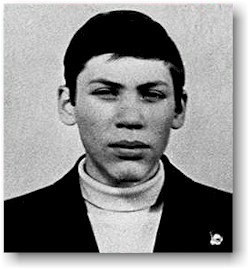
- Handle: Unknown
a.k.a.: Vladimir Levin
Claim to fame:
A graduate of St. Petersburg Tekhnologichesky University, this mathematician allegedly masterminded the Russian hacker gang that tricked Citibank's computers into spitting out $10 million. Arrested by Interpol at Heathrow Airport in 1995.
First encountered a computer:
Unknown. Accused of using his office computer at AO Saturn, a St. Petersburg, Russia, computer firm, to break into Citibank.
Unusual tools:
Along with a computer, computer games and disks, Russian police confiscated a camcorder, music speakers and a TV set from Levin's apartment.
Little-known fact:
Levin claimed that one of the lawyers assigned to defend him was actually an FBI agent.
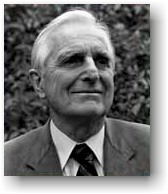
- Dr. Engelbart is responsible for hypertext, windows, cross-file editing and the mouse. There would be no Net hacking without him. Engelbart first thought of hypermedia while serving as a radar technician during World War II. Seeing information displayed on a radar screen, he imagined sitting in front of a similar display, "flying around" in an information space. The engineer pursued his wild ideas in his own lab at the Stanford Research Institute, and first demonstrated his hypermedia "oNLine System" (or NLS) and computer mouse to a stunned audience in 1968.
Holder of more than 20 patents, Engelbart is founder and director of the Bootstrap Institute, specializing in strategies, technologies and processes for building high-performance organizations, teams and individuals.
He also likes to make up science-fiction stories for children.
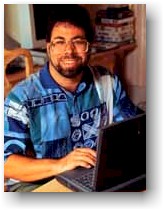
- Why Woz? Because he exemplifies the young hacker's dream. Just outta college, the two Steves (Wozniak and Jobs) set to work designing computer games (for Atari) and building blue boxes (for themselves). Woz builds the Apple I. It has no keyboard, no case, no sound or graphics, but it is a thing of beauty nonetheless. The boys shake hands on April Fools' Day 1976, and Apple Computer is born. The pride of the Homebrew Computer Club, Wozniak trades in his HP programmable calculator and Jobs sells his VW van to finance production from a Palo Alto garage.
Now Wozniak's headed back to Apple, where it all began two decades ago. Will his magic work a second time?

- We'll admit this Berkeley astronomer doesn't qualify as one of the usual suspects: He thinks the Net amounts to one vast cultural wasteland. But Cliff Stoll had the brains and persistence to track KGB cracker Markus Hess through the Ethernet to Hanover, Germany -- then package the feat as a bestselling, real-life thriller. For many The Cuckoo's Egg was their first introduction to the hacking underworld. It's still a great read.
So what if its author thinks the Net is a big dose of Silicon snake oil.
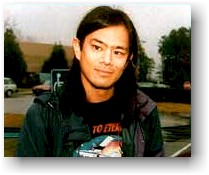
- To state the obvious: Shimomura outhacked and outsmarted Kevin Mitnick, the nation's most infamous cracker/phreaker, in early 1994. After colleagues at the San Diego Supercomputing Center informed Shimomura that someone had stolen hundreds of software programs and files from his work station, the computer security expert worked on a tip to track the thief through the WELL. A labyrinthine telco trail eventually led to an apartment complex in Raleigh, N.C., where FBI agents apprehended Mitnick. (They've had less luck tracking down Mitnick's alleged Israeli accomplice.)
But that's not all: A consultant to the FBI, Air Force and National Security Agency, Shimomura is rumored to have engaged in darkside dabblings himself. As Jon Littman notes, "I've always wondered why he wrote that program to eavesdrop on cell phone calls. Somehow it doesn't sound like an NSA contract."


 - Alan Cox (born July 22, 1968 in Solihull, England) is a British computer programmer heavily involved in the development of the Linux kernel since its early days 1991.
- Alan Cox (born July 22, 1968 in Solihull, England) is a British computer programmer heavily involved in the development of the Linux kernel since its early days 1991.  - Handles: dmr and Ken
- Handles: dmr and Ken - Linus Torvalds
- Linus Torvalds  - Linus
- Linus - Handle: None (nothing to hide!)
- Handle: None (nothing to hide!) - Mitchell Epling
- Mitchell Epling - Handle: Cap'n Crunch
- Handle: Cap'n Crunch - Handle: Phiber Optik
- Handle: Phiber Optik - Handle: rtm
- Handle: rtm - Handle: Condor
- Handle: Condor - Handle: Dark Dante
- Handle: Dark Dante - Handle: Julf
- Handle: Julf - Handle: Unknown
- Handle: Unknown - Dr. Engelbart is responsible for hypertext, windows, cross-file editing and the mouse. There would be no Net hacking without him. Engelbart first thought of hypermedia while serving as a radar technician during World War II. Seeing information displayed on a radar screen, he imagined sitting in front of a similar display, "flying around" in an information space. The engineer pursued his wild ideas in his own lab at the Stanford Research Institute, and first demonstrated his hypermedia "oNLine System" (or NLS) and computer mouse to a stunned audience in 1968.
- Dr. Engelbart is responsible for hypertext, windows, cross-file editing and the mouse. There would be no Net hacking without him. Engelbart first thought of hypermedia while serving as a radar technician during World War II. Seeing information displayed on a radar screen, he imagined sitting in front of a similar display, "flying around" in an information space. The engineer pursued his wild ideas in his own lab at the Stanford Research Institute, and first demonstrated his hypermedia "oNLine System" (or NLS) and computer mouse to a stunned audience in 1968.  - Why Woz? Because he exemplifies the young hacker's dream. Just outta college, the two Steves (Wozniak and Jobs) set to work designing computer games (for Atari) and building blue boxes (for themselves). Woz builds the Apple I. It has no keyboard, no case, no sound or graphics, but it is a thing of beauty nonetheless. The boys shake hands on April Fools' Day 1976, and Apple Computer is born. The pride of the Homebrew Computer Club, Wozniak trades in his HP programmable calculator and Jobs sells his VW van to finance production from a Palo Alto garage.
- Why Woz? Because he exemplifies the young hacker's dream. Just outta college, the two Steves (Wozniak and Jobs) set to work designing computer games (for Atari) and building blue boxes (for themselves). Woz builds the Apple I. It has no keyboard, no case, no sound or graphics, but it is a thing of beauty nonetheless. The boys shake hands on April Fools' Day 1976, and Apple Computer is born. The pride of the Homebrew Computer Club, Wozniak trades in his HP programmable calculator and Jobs sells his VW van to finance production from a Palo Alto garage.  - We'll admit this Berkeley astronomer doesn't qualify as one of the usual suspects: He thinks the Net amounts to one vast cultural wasteland. But Cliff Stoll had the brains and persistence to track KGB cracker Markus Hess through the Ethernet to Hanover, Germany -- then package the feat as a bestselling, real-life thriller. For many The Cuckoo's Egg was their first introduction to the hacking underworld. It's still a great read.
- We'll admit this Berkeley astronomer doesn't qualify as one of the usual suspects: He thinks the Net amounts to one vast cultural wasteland. But Cliff Stoll had the brains and persistence to track KGB cracker Markus Hess through the Ethernet to Hanover, Germany -- then package the feat as a bestselling, real-life thriller. For many The Cuckoo's Egg was their first introduction to the hacking underworld. It's still a great read.  - To state the obvious: Shimomura outhacked and outsmarted Kevin Mitnick, the nation's most infamous cracker/phreaker, in early 1994. After colleagues at the San Diego Supercomputing Center informed Shimomura that someone had stolen hundreds of software programs and files from his work station, the computer security expert worked on a tip to track the thief through the WELL. A labyrinthine telco trail eventually led to an apartment complex in Raleigh, N.C., where FBI agents apprehended Mitnick. (They've had less luck tracking down Mitnick's alleged Israeli accomplice.)
- To state the obvious: Shimomura outhacked and outsmarted Kevin Mitnick, the nation's most infamous cracker/phreaker, in early 1994. After colleagues at the San Diego Supercomputing Center informed Shimomura that someone had stolen hundreds of software programs and files from his work station, the computer security expert worked on a tip to track the thief through the WELL. A labyrinthine telco trail eventually led to an apartment complex in Raleigh, N.C., where FBI agents apprehended Mitnick. (They've had less luck tracking down Mitnick's alleged Israeli accomplice.)